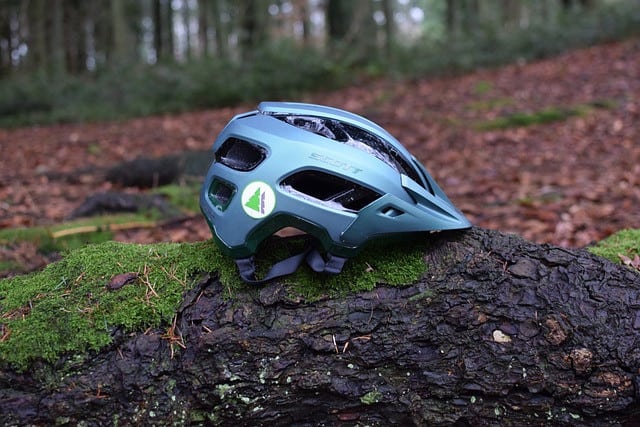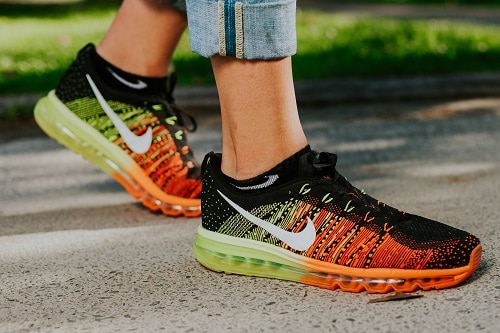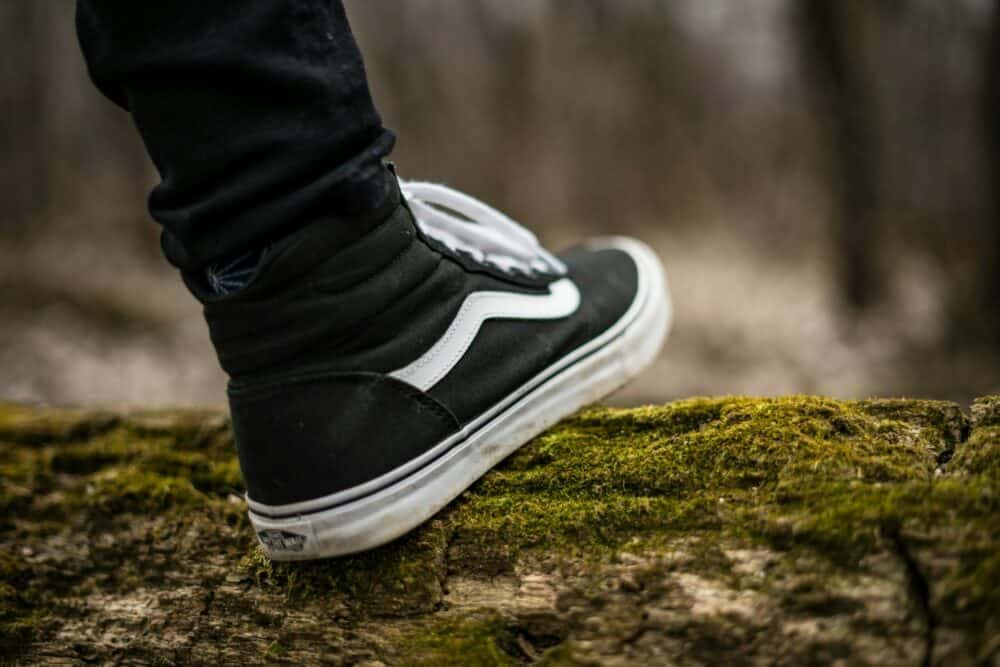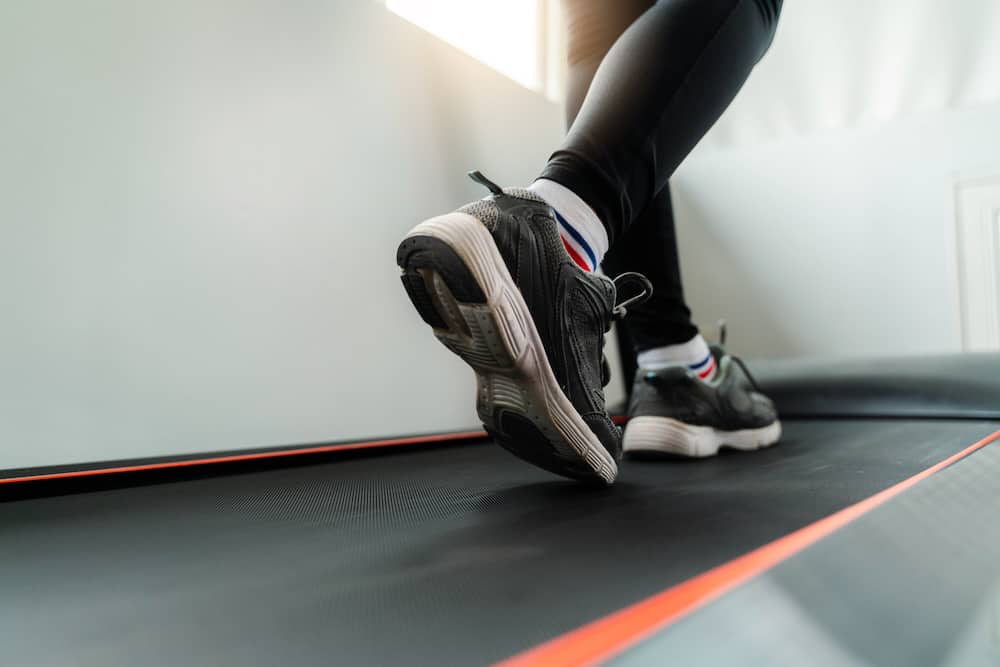Are you concerned about the condition of your bike helmet? We totally get it – safety should always come first! This informative article will discuss how to assess whether your bike helmet has sustained any damage. Awareness of the signs and indicators that may show potential compromises to the helmet’s integrity is crucial.
By familiarizing yourself with these essential factors, you will be able to make informed decisions about your safety gear and identify when to repair or replace it. We’ll discuss in detail the signs and indicators to look out for, including cracks, deformations, and worn-out padding. We’ll cover it all. So, let’s get started!
Signs of Helmet Deterioration
Below are common signs that can indicate helmet deterioration:
Visible Cracks or Dents
Cracks or dents in the outer shell of your helmet can weaken its structural integrity and compromise its ability to protect against impacts. During manufacture, the raw materials are heated and molded together to form a compact structure. Any cracks or dents on the surface indicate the fusion is getting weak. This means the helmet could easily break apart upon impact.
Sometimes these cracks may form as a result of over-exposure to harsh environmental factors such as excessive heat. Other times you might notice a crack after an accident. Either way, you shouldn’t ignore them no matter how small because over time, these cracks widen while the dents deepen affecting the helmet structure.
Deformation
Any significant changes in the helmet’s shape or structure, such as bulges or twists, can indicate potential damage or material degradation. Deformation mostly occurs after collisions or mishandling of the helmet. Other times a helmet may deform when exposed to harsh environmental conditions such as high heat and chemicals.
Deformation affects your helmet in two ways: The fit and the structural integrity. You might find it hard to properly fit a deformed helmet. Either you struggle to fit your head or to level the brow area. A helmet that is not properly fitted might compromise your safety.
Similarly, a deformed helmet might affect the strength of the helmet. Some parts might get bent or broken hence compromising the structural integrity of the helmet. And sadly, in most cases, deformed helmets cannot be repaired. You can only replace them.

Loose or Damaged Padding
Inner padding protects your head upon impact by absorbing and distributing the destructive energy. If the helmet’s padding is loose, torn, or compressed, it may no longer provide the necessary cushioning and impact absorption. Check the foam padding inside the helmet for any signs of crumbling, cracking, or extreme softness. Deteriorated foam may compromise its ability to absorb impact energy effectively.
Good quality padding can handle repeated impacts without major damage. However, it’s always a good idea to assess the extent of any damage before using the helmet again. Also note that over time, the foam padding inside the helmet may compress due to repeated use. If it feels significantly compressed or shows signs of uneven density, it may not provide optimal protection.
Luckily, most helmet padding can be repaired or replaced without necessarily replacing the entire helmet.
Faded or Discoloured Shell
The number one contributor to fading or discoloration of polymer helmet shells is exposure to sunlight. Exposure to UV radiation can cause the helmet’s outer shell to fade or change color. When ultraviolet (UV) radiation interacts with polymer materials, it can cause them to undergo a process known as photodegradation, which can lead to discoloration. This process occurs due to the energy carried by UV radiation, which is absorbed by the polymer molecules. It may indicate material degradation or weakening, although sometimes it doesn’t necessarily mean the helmet is damaged.
It’s also important to note that the extent of UV-induced discoloration can vary depending on factors such as the intensity and duration of UV exposure, the type of polymer material, and any additional additives or stabilizers present in the polymer formulation. Manufacturers often incorporate UV absorbers or other additives to mitigate the impact of UV radiation and reduce discoloration in polymer products.
Discoloration may also occur due to exposure to harsh chemicals. Now these will definitely damage your helmet and weaken its structure significantly. Helmets damaged via chemical exposure need to be replaced immediately.
Unusual Odors
Does your helmet have strong or persistent odors? Odors, especially those that are unusual or unpleasant, may suggest the presence of mold, mildew, or other types of fungi infestation. When a helmet is exposed to moist and humid environments, it provides favorable conditions for the growth of mold and mildew. These microorganisms cause deterioration and damage to the helmet material through various scientific processes.
- Hyphae growth: as they germinate, mold and mildew produce thread-like structures called hyphae. These hyphae extend and penetrate into the helmet material, such as the padding or the inner foam layer, seeking nutrients for growth. They then obtain nutrients by secreting enzymes that break down organic matter present in the helmet material. These enzymes break down the polymers and other compounds of the material, making them accessible as a source of nutrition for the fungi.
- Decomposition and structural changes: Over time, the hyphae of mold and mildew break down polymers, disrupt the material’s matrix, and alter its physical properties. This degradation can result in reduced strength, stiffness, and impact resistance of the helmet.
- Metabolic byproducts: As the mold and mildew feed and grow, they produce metabolic byproducts, including organic acids, enzymes, and volatile compounds. Some of these byproducts can have corrosive properties and may contribute to the degradation of the helmet material.
- Moisture retention: Mold and mildew thrive in moist environments, and their presence can lead to increased moisture retention within the helmet. Prolonged exposure to moisture can weaken the structural integrity of the helmet, making it more prone to damage.
To prevent further fungi damage to your helmet, store it in a dry and well-ventilated area. Regularly inspect and clean the helmet, especially after exposure to moisture or during periods of increased humidity. If you detect mold or mildew growth either through unpleasant odors, staining, or visible discoloration on the helmet’s surface, thoroughly clean the helmet. In severe cases, replace the affected parts of the helmet to prevent irreversible damage.
Separation of Layers
As a helmet ages, you might notice the different layers of the helmet become separated or detached. For some poor quality helmets, all it takes is a few washes and you notice the layers falling apart. This can compromise the helmet’s protective capabilities. In such a situation, take your helmet for repair immediately to avoid further irreversible separation.
Damaged Straps or Buckles
The straps and buckles securing the helmet should be intact and functional. If they are frayed, broken, or difficult to adjust, they might need replacement. Straps and buckles play a very significant role in ensuring proper fit. They are the reason your helmet doesn’t come out flying after an accident. Keeping them in mint condition further enhances your safety on the trail.
Loose or Ineffective Retention System
Just like the straps and buckles, the retention system, typically the adjustable strap system, should securely hold the helmet in place. If it becomes loose or fails to secure properly, it may not provide proper protection. You need to repair or replace it.
Worn or Degraded Chin Strap
The chin strap protects your chin. It should always remain sturdy and functional. If it shows signs of wear, fraying, or loss of elasticity, it may need replacement.
Loose or Missing Interior Lining
The interior lining ideally provides comfort and additional impact absorption. It’s a piece of cloth mainly made from moisture-wicking fabrics such as polyester or cotton. The lining should be secure and intact. Any loose or missing lining may indicate internal deterioration or damage.
Signs of Rust
A helmet whose metal components such as screws or rivets are corroded or rusted is an indication of a degrading helmet. With time, rust can weaken the helmet’s overall integrity. To prevent rusting, avoid storing a wet helmet. Always dry it properly under a shade on a hot day before storage.
Manufacturer’s Recommended Expiration Date
Helmet manufacturers often provide an expiration date or recommended lifespan for their helmets. If your helmet has surpassed this date, it’s advisable to replace it, even if it shows no obvious signs of deterioration.
In Conclusion
The most important thing to remember about bike helmet safety is that any damage to your helmet, no matter how small, can impact its ability to protect you in the event of a crash. Keep in mind that these signs may not always be visible from the outside, so it’s important to inspect your helmet thoroughly, both externally and internally.
Similarly, you should inspect your helmet regularly, and look for any signs of damage, such as cracks, dents, or missing padding. If you notice any damage, it’s important to replace your helmet as soon as possible. Even if you don’t see any damage, your helmet should be replaced every three to five years, as per your manufacturer’s recommendation, or sooner if it’s been involved in a crash.















Hello!
It’s wise to be attentive to the condition of your bicycle helmet. Typically, if you notice any visible cracks, dents or scratches in the outer shell, or if the foam inside doesn’t return to its shape when pressed, it’s a sign that the helmet might be damaged. I think I am right in saying that even without visible signs of wear, it’s recommended to replace your helmet every 3-5 years. That was a very informative and pleasant read and will be taken on board, thank you. Have a lovely day ahead.
Hi, Brian, and thank you.
Thank you for your kind words.
You are correct that changing the helmet after three years is highly recommended. However, the actual life span will be determined by the condition of use, as you can see in this post here. It is about how often you should replace the helmets and things to consider if you are considering replacing them.
It’s great to hear about the benefit of the article, too.
Don’t hesitate to contact me to help you with anything else or if you have any questions.
Your helmet is the thing that is going to help save your life should you be unfortunate enough to fall off or to be involved in a collision when riding your bicycle. It is important therefore, that it is in 100% working order to give it the best possible to perform its role. This article is a great checklist to help us ascertain that our own helmets are still in tip top working order.
I wonder, if you have any real life instances you could share to demonstrate how a helmet has mitigated or saved you from a head injury?
Thank You, Simon
Hi, Simon, and thank you.
Thank you for your kind words.
The video is a good example to answer your question. Show it well what the helmets defend. Here are to some facts about bike helmets.
It’s great to hear about the benefit of the article, too.
Don’t hesitate to contact me to help you with anything else or if you have any questions.